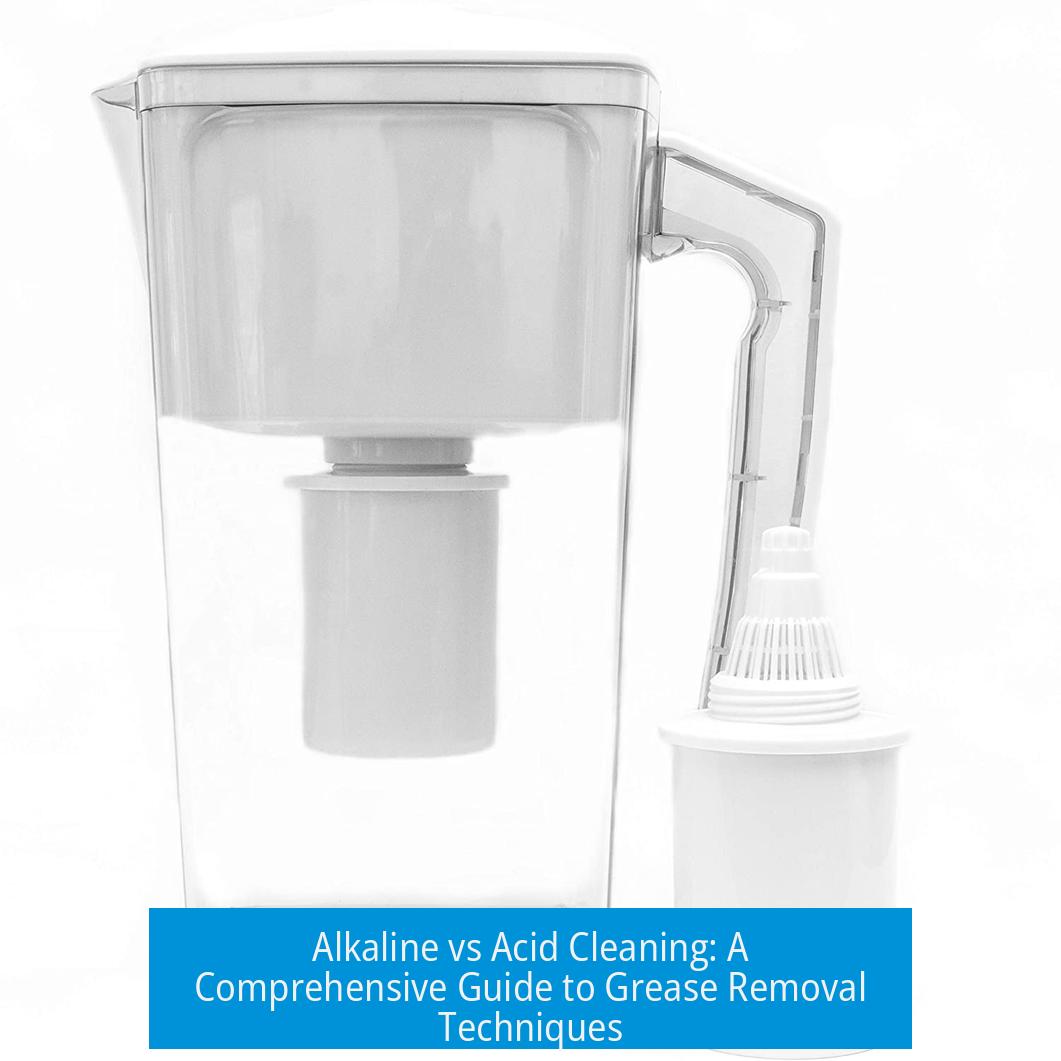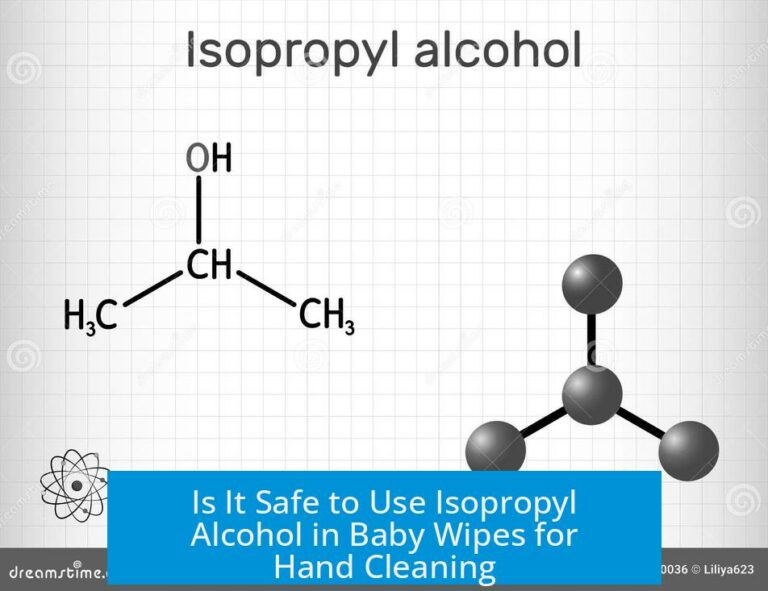Alkaline vs Acid Cleaning: Understanding the Chemistry Behind Grease Removal
Alkaline and acid cleaning differ primarily in their chemical mechanisms and effectiveness in removing grease, which consists mostly of fats (triglycerides) and proteins. Acid cleaning, often involving agents like vinegar, acts quickly in catalyzing hydrolysis of fats under acidic conditions, while alkaline cleaning, using bases such as bleach (hypochlorite solutions), removes grease through slower saponification and oxidation reactions. Both have specific roles, but alkaline cleaners are generally favored for heavy grease removal due to their surfactant and oxidizing properties, whereas acid cleaners assist more in mechanical removal and protein breakdown.
1. Composition of Grease and Cleaning Challenges
Grease found on kitchen surfaces has two main types of components: fat-based and protein-based residues. Proteins tend to dissolve or detach easily with water and mild cleaning agents. Fats, mostly triglycerides, present a bigger challenge. These molecules are ester compounds made of fatty acids linked to glycerol and adhere strongly to surfaces.
Removing these fats requires breaking the ester bonds of triglycerides. Detergents aid in this by lowering surface tension and encapsulating fats. Modern detergents often contain enzymes such as lipases and proteases that chemically break down fats and proteins into soluble forms.
2. Acid Cleaning: Vinegar and Its Role
2.1 Chemistry of Vinegar (Acetic Acid)
Vinegar is a mild acid with a typical pH of 2 to 2.5. It works mainly by catalyzing the hydrolysis of ester bonds in triglycerides. This acid-catalyzed hydrolysis follows a first-order kinetics where the rate depends predominantly on the substrate concentration, not the acid concentration, since the acid acts as a catalyst.
The initial step is protonation of the ester carbonyl oxygen, which rapidly makes the bond more susceptible to cleavage. This protonation step is consistently faster than the first step in alkaline hydrolysis.
2.2 Vinegar’s Practical Use in Cleaning
Vinegar’s acidic nature helps break down grease and loosens deposits, making scrubbing easier. However, it has poor surfactant properties and limited ability to lower surface tension between water and grease effectively. This limits vinegar’s capability on greasy surfaces without mechanical action.
Mixing vinegar with baking soda produces sodium acetate, a buffering salt with some detergent-like behavior. However, this combination lacks a long hydrophobic tail typical of effective surfactants, reducing cleaning power.
Acid cleaning with vinegar works better when combined with mechanical agitation. This inclusion aids detachment of both fat and protein residues.
3. Alkaline Cleaning: Bleach and Saponification
3.1 Chemistry of Bleach (Hypochlorite)
Bleach is a strong alkaline solution with pH generally ranging from 12 to 12.5. It contains hypochlorite ions, which do not have surfactant properties but act both as a base and a powerful oxidizer.
In alkaline cleaning, saponification occurs, which is a hydrolysis process that breaks ester bonds in triglycerides to form soap (salts of fatty acids) and glycerol. This reaction follows second-order kinetics, depending on concentrations of both the base and the ester.
The basic hydrolysis proceeds slower than acid-catalyzed hydrolysis at room temperature but accelerates significantly at elevated temperatures (~100 °C). Saponification can complete in about 30 minutes under heating and proper reactant ratios.
3.2 Oxidation and Surfactant Properties
Besides saponification, bleach oxidizes organic compounds. This enhances breakdown of complex residues and provides disinfecting action.
Unlike acid vinegar, bleach has little inherent ability to reduce surface tension but is often combined in commercial formulations with surfactants to improve grease emulsification.
4. Detailed Comparison of Acid and Alkaline Cleaning
| Aspect | Acid Cleaning (Vinegar) | Alkaline Cleaning (Bleach) |
|---|---|---|
| Chemical Mechanism | Acid-catalyzed hydrolysis of esters (first order reaction) | Base-catalyzed hydrolysis (saponification) and oxidation (second order reaction) |
| Reaction Speed (Room Temp.) | Fastest initial protonation step; effective with scrubbing | Slow saponification; needs heating for fast effect |
| pH Range | Acidic ~2-2.5 | Alkaline ~12-12.5 |
| Surfactant Properties | Negligible | None inherently; may be added in formulations |
| Safety Considerations | Mild; safe with proper use | Caustic and oxidizing; requires care |
| Effectiveness on Grease | Moderate; aids physical removal | High; breaks down fats and disinfects |
5. Hydrolysis of Triglycerides: Acid vs Base Catalysis
Triglycerides undergo hydrolysis to separate fatty acids and glycerol. This is essential for grease removal.
Acid hydrolysis involves protonation of the ester, creating an intermediate that breaks down rapidly. The reaction rate depends only on substrate concentration, not acid concentration.
Basic hydrolysis (saponification) requires hydroxide ions to attack the ester bond. The rate depends on both substrate and hydroxide levels. Temperature profoundly influences reaction speed.
Practically, at room temperature, acid hydrolysis leads to faster initial reactions, but alkaline cleaning eventually converts fats into soluble soaps.
6. Practical Recommendations for Cleaning
6.1 Homemade Cleaning Agents
- Vinegar: Effective for light grease and aiding scrubbing. Suitable for removing protein residues and mild fats. Safer for frequent use.
- Bleach: Not effective as a detergent alone. Requires heating and caution due to caustic and oxidizing effects. Not recommended solely for grease removal at home.
6.2 Commercial Products
Commercial cleaners often contain optimized surfactants, enzymes, and chemicals combining acid and alkaline components. These outperform homemade mixtures in both speed and thoroughness for grease removal.
For domestic purposes, using soap-based detergents is economical and very effective. Soaps act as surfactants, encapsulating fats into micelles for rinsing away.
7. Summary of Key Scientific Points
- Grease consists mainly of fats (triglycerides) and proteins; fats are tougher to remove.
- Acid cleaning speeds early ester bond protonation, enabling quicker initial breakdown, but relies on mechanical agitation.
- Alkaline cleaning involves saponification and oxidation, slower at room temperature but effectively converts fats into soap substances.
- Vinegar is mild, safer, and assists scrubbing but lacks surface tension reduction capability.
- Bleach is highly alkaline and oxidizing but not a surfactant; requires elevated temperature and careful handling.
- Soap-based cleaners remain the best and most economical choice for grease removal in home environments.
Conclusion
Both acid and alkaline methods have distinct chemical pathways for removing grease. Vinegar’s acid-catalyzed hydrolysis acts faster initially but needs mechanical help to remove fats effectively. Bleach as a base facilitates saponification and oxidation but reacts slower at room temperature and demands safety precautions. Commercial detergents, enriched with surfactants and enzymes, surpass both in efficiency for grease cleaning.
Choosing between alkaline and acid cleaners depends on the type of grease, cleaning context, safety, and the tools available. For typical home use, soap-based detergents provide a balanced solution with strong cleaning power and safety. Vinegar can be an aid for light cleaning or combined with scrubbing. Bleach is better reserved for disinfection tasks rather than direct grease removal unless in specialized formulations.
What makes alkaline cleaning different from acid cleaning in breaking down grease?
Alkaline cleaning uses a base-driven reaction called saponification, which breaks fats into soap and glycerol but acts slower at room temperature. Acid cleaning uses acid-catalyzed hydrolysis, which is faster in the initial step by protonating esters.
Why is vinegar often preferred over bleach for homemade grease removal?
Vinegar helps mechanically break down grease while being acidic and mildly reducing surface tension. It aids scrubbing. Bleach lacks surfactant properties and is highly caustic and oxidizing, raising safety concerns.
How do pH levels affect bleach’s cleaning action compared to vinegar?
Bleach works best at high pH as hypochlorite ions but forms hypochlorous acid at low pH, which is more reactive. Vinegar consistently remains acidic with a pH around 2-2.5, promoting faster acid-catalyzed hydrolysis of fats.
Can vinegar alone fully remove tough grease deposits?
No, vinegar mainly aids by softening or loosening grease for scrubbing. Fully removing stubborn, fat-based deposits usually requires detergents or commercial cleaners with specific enzymes and surfactants.
Is using bleach more effective than vinegar for grease removal at home?
While bleach is a strong base and oxidizer, its lack of surfactants and slower room-temperature action make it less practical. Vinegar is safer and more user-friendly, but commercial detergents outperform both for efficiency.





Leave a Comment